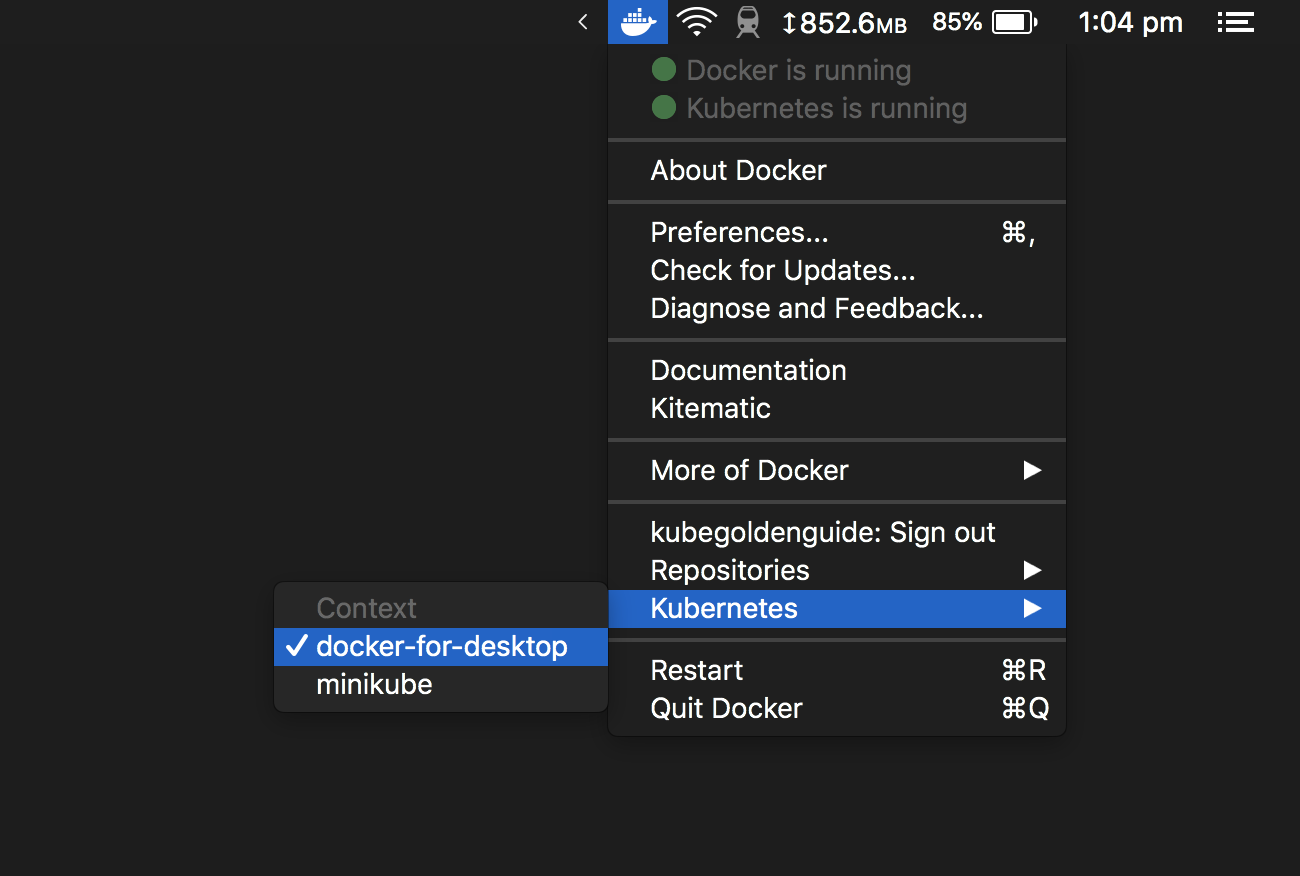

- #DOCKER FOR MAC NOT WORKING AFTER STOPING MINIKUBE HOW TO#
- #DOCKER FOR MAC NOT WORKING AFTER STOPING MINIKUBE DRIVER#
- #DOCKER FOR MAC NOT WORKING AFTER STOPING MINIKUBE UPGRADE#

#DOCKER FOR MAC NOT WORKING AFTER STOPING MINIKUBE DRIVER#
Note: Host folder sharing is not implemented in the KVM driver yet. To access the Kubernetes Dashboard, run this command in a shell after starting Minikube to get the address: Or pass the context on each command like this: kubectl get pods -context=minikube. Minikube sets this context to default automatically, but if you need to switch back to it in the future, run: This context contains the configuration to communicate with your Minikube cluster.

The minikube start command creates a kubectl context called “minikube”.
#DOCKER FOR MAC NOT WORKING AFTER STOPING MINIKUBE UPGRADE#
See upgrade minikube Interacting with Your Cluster Kubectl This command shuts down and deletes the Minikube Virtual Machine. The minikube delete command can be used to delete your cluster. Starting the cluster again will restore it to its previous state. This command shuts down the Minikube Virtual Machine, but preserves all cluster state and data. The minikube stop command can be used to stop your cluster. To set the AuthorizationMode on the apiserver to RBAC, you can use: -extra-config=thorization-mode=RBAC. To change the LeaderElection.LeaderElect setting to true on the scheduler, pass this flag: -extra-config=true.

This feature also supports nested structs. To change the MaxPods setting to 5 on the Kubelet, pass this flag: -extra-config=kubelet.MaxPods=5. Here is the documentation for each supported configuration: Valid keys can be found by examining the documentation for the Kubernetes componentconfigs for each component. This flag takes a string of the form component.key=value, where component is one of the strings from the below list, key is a value on theĬonfiguration struct and value is the value to set. This flag is repeated, so you can pass it several times with several different values to set multiple options. To use this feature, you can use the -extra-config flag on the minikube start command. Minikube has a “configurator” feature that allows users to configure the Kubernetes components with arbitrary values. Follow the steps given below to start and explore Minikube. This brief demo guides you on how to start, use, and delete Minikube locally.


 0 kommentar(er)
0 kommentar(er)
